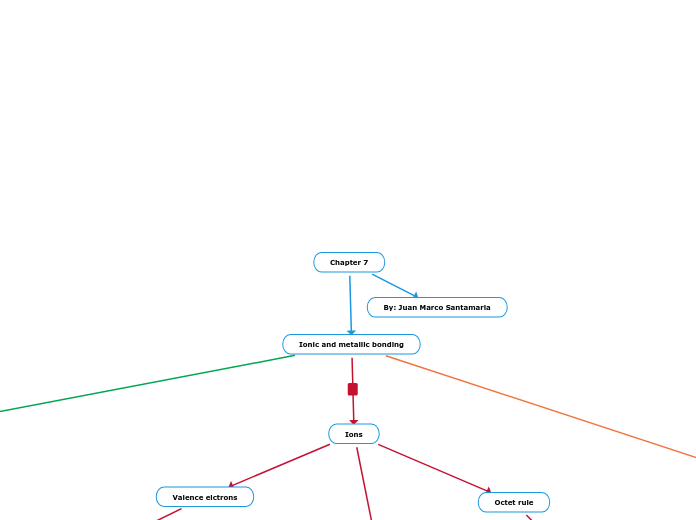
Ions
Valence elctrons
Valence electrons are the electrons in the highest occupied energy level of an element's atoms.
Cations
An atom's loss of valence electrons produces a cation of a positicely charged ions
Anions
The gain of negatively charged electrons by neutral atom produces an anion.
Halide anions
Are the ions that are produced when atoms of chlorine and other halogenes gain electrons are called.
Electron dot structure
Are diagrams that show valence electrons as dots
Octet rule
In forming compounds, atoms tend to achieve the electron configuration of a noble gas
Bonding in metals
Metallic bonds
Consist of the attraction of free-floating valence electrons for the positively charged metal ions.
Alloys
Allowys are mixtures composed of two or more elements, at least one of wich is metal
Alloys examples
Sterling silver
Ag 92.5%
Cu 7.5%
Cast iron
Fe 96%
C 4%
Stainless steel
Fe 80.6%
Cr 18.0%
C 0.4%
Ni 1.0%
Spring steel
Fe 98.6%
C 0.4%
Cr 1.0%
Surgical steel
Fe 67%
Cr 18%
Ni 12%
Mo 3%
Ionic bonds and ionic compounds
Formula unit
Is the lowest whole number ratioof ions in an ionic compound.
Ionic compounds
Compounds composed of cations and anions.
Most ionic compounds are crystalline solids at room temperature.
Ionic compounds generally have high melting points
Ionic compounds can conduct an electric current when melted or dissolved in water.
Ionic bonds
The electrostatic forces that hold ions together in ionic compounds
chemical formula
Shwos the kinds and numbers of atoms in the smallest representative unit of a substance.